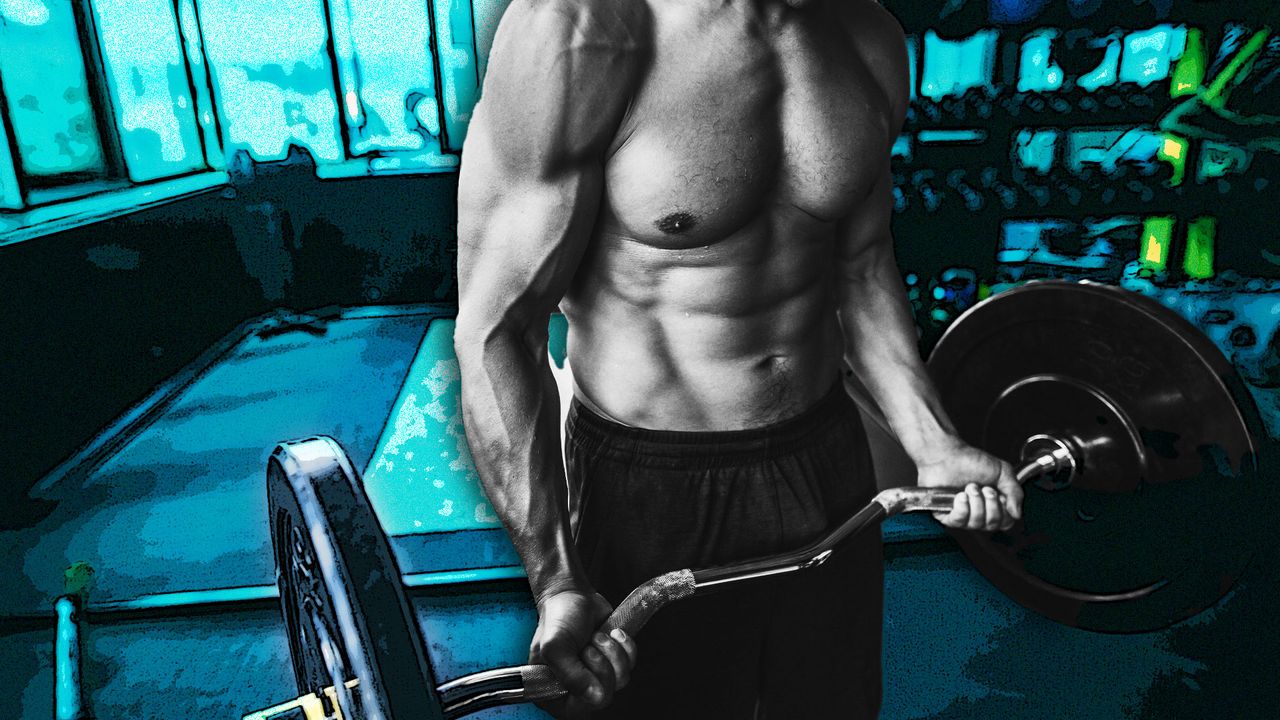Let’s get right to it: You’re looking for the best exercises for bigger arms, and you’ve come to the right place. But before you screenshot the exercises below, grab your gym bag, and head out to the weight room, there are a few things you should know.
If building bigger arms were as simple as banging out biceps curls, a lot more guys would have them. But what we know from peer-reviewed, published scientific research is that the best way to build muscle is not so much about the particular exercises you do as it is about the way you do them.
“The key is not the exercise selection,” Luke Carlson, founder and CEO of Discover Strength, says. “Almost every guy is doing the right exercises. They’re just not doing them in a way that stimulates muscle growth.”
Speaking of exercise selection, it’s not all about the biceps, either. “A lot of people make the mistake of just focusing a little bit too much on the biceps. The triceps is actually the bulk—about two thirds—of the arm,” says Antony Brown, personal training leader at Life Time in Lake Zurich, Illinois.
“Most times, when guys say they want bigger arms, they’re thinking about their biceps,” Carlson says. “If you want to have the look of more size on your arms, which is really what we’re talking about, training your triceps contributes a lot to that look.”
Read on for more exercise advice from Carlson and Brown, along with a quick refresher on the key muscle-building strategies to make sure your gains stick when you leave the gym.
Train to (or near) failure
The research is very clear that mechanical tension is a powerful driver of muscle growth. Mechanical tension refers to the involuntary slowing down of your reps that occurs as your muscles fatigue. It is not the same thing as time under tension, which typically involves consciously slowing the speed of your reps overall (and, FYI, hasn’t been shown to influence muscle growth).
As you might have guessed, maximizing mechanical tension means training to failure, or at least to within one or two reps of it. But the good news is that weight and reps have no bearing on results—meaning, you’ll gain just as much by reaching failure with five heavy reps as you would with 20 light ones. “You have some autonomy here,” says Carlson. “If you like to do heavy weights and do four or five reps, that’s fine. If you like to use a lighter weight and do more repetitions, that’s also fine. The science is clear: It is the exact same.”
Lower, slower
Studies have shown us that the eccentric, or lowering, portion of a rep is where the real magic happens. Yet most guys still delegate this phase of the rep to gravity. “No one does it, because people are just unaware,” Carlson says. “How do we learn how to lift weights? We just look at the guy in the gym that’s got slightly bigger biceps than us, and this is what he’s doing. He lifts it and lets it drop. Largely, exercisers don’t read scientific research.”
To maximise the eccentric side of your reps, Carlson suggests “lifting for about two seconds, lowering for four seconds, and also considering going to the point of failure and then doing some eccentric work after that.” With the help of a gym buddy, you can even isolate the eccentric phase entirely. “If we really want to stimulate size in the biceps and triceps, we would do a lot of eccentric-accentuated or eccentric-only training,” says Carlson. “Having a training partner lift the weight for you, and you lowering it for 10 seconds, is about as valuable as it gets.”
Feel the stretch
When we do exercises like biceps curls and triceps pushdowns, we tend to emphasise the peak contraction of the rep. However, the lengthened position might be just as valuable, if not more so. “One mistake that a lot of people make is they’ll focus on that squeeze at the top of the rep, but not necessarily lengthen the whole muscle at the bottom,” Brown says. “A lot of the research nowadays is showing that we can stimulate more muscle growth by working in that longer range of motion.”

